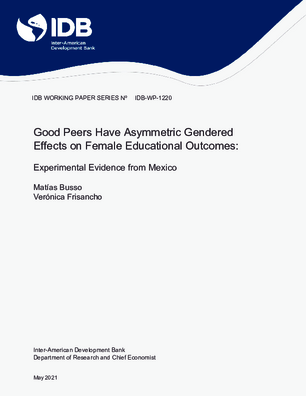Good Peers Have Asymmetric Gendered Effects on Female Educational Outcomes: Experimental Evidence from Mexico
Date
May 2021
Summary
This study examines the gendered effects of early and sustained exposure to high-performing peers on female educational trajectories. Exploiting random allocation to classrooms within middle schools, we measure the effect of male and female high performers on girls' high school placement outcomes. We disentangle two channels through which peers of either sex can play a role: academic performance and school preferences. We also focus on the effects of peers along the distribution of baseline academic performance. Exposure to good peers of either sex reduces the degree to which high-achieving girls seek placement in more-selective schools. High-achieving boys have particularly strong, negative effects on high-performing girls' admission scores and preferences for more-selective schools. By contrast, high-achieving girls improve low-performing girls' placement outcomes, but exclusively through a positive effect on exam scores.




